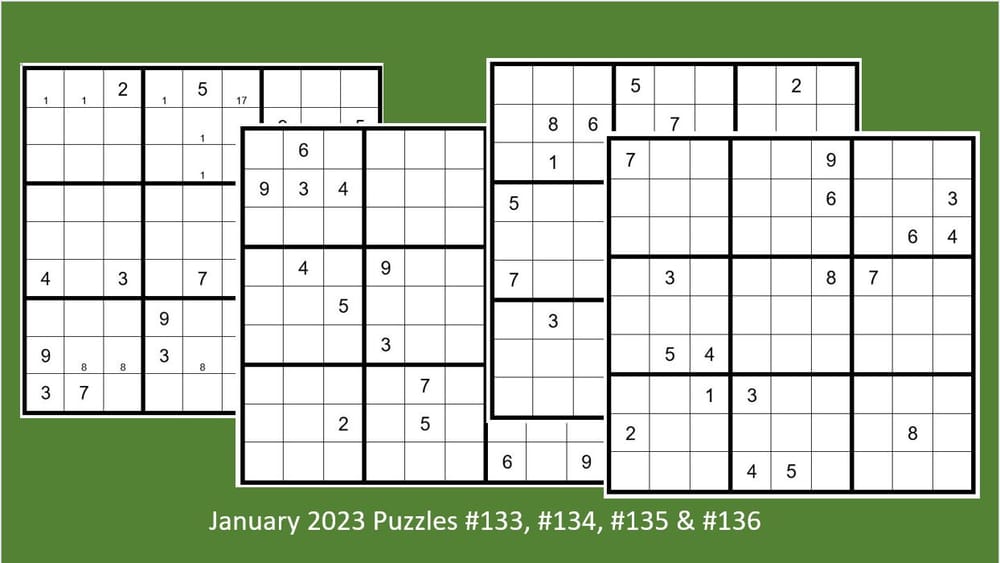Sudoku Puzzles #133, #134, #135, & #136
by: Dan LeKander
You have already celebrated the start of 2023, so it is time to settle in and welcome a year of promise for Sudoku. We will continue with the 4 Sudoku puzzle format. So, let’s make this a great year for Sudoku growth!
Clueless?
We start with a Sudoku puzzle in progress, where it appears that there are no more obvious or not-so-obvious clues. Can you find the hidden clue in Puzzle #133?
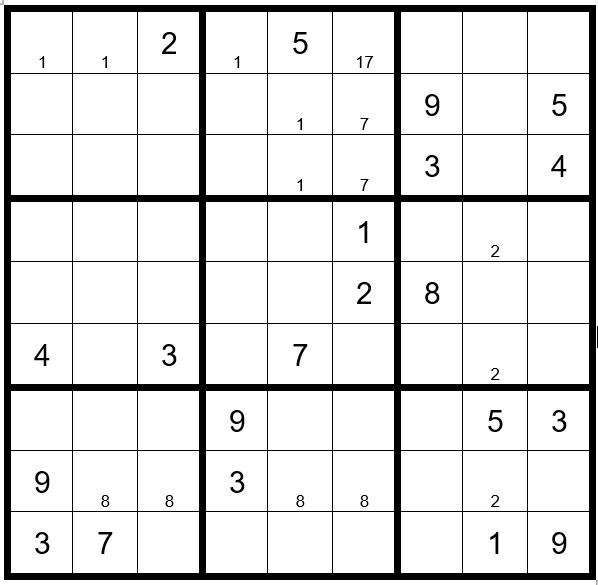
(The answer follows the conclusion of Puzzle #136, the feature puzzle for this month)
Logic Puzzle
Difficult rating … 8/10
(Rating based on puzzles not requiring advanced techniques)
Puzzle #134 should be fun and a bit of a challenge for you!
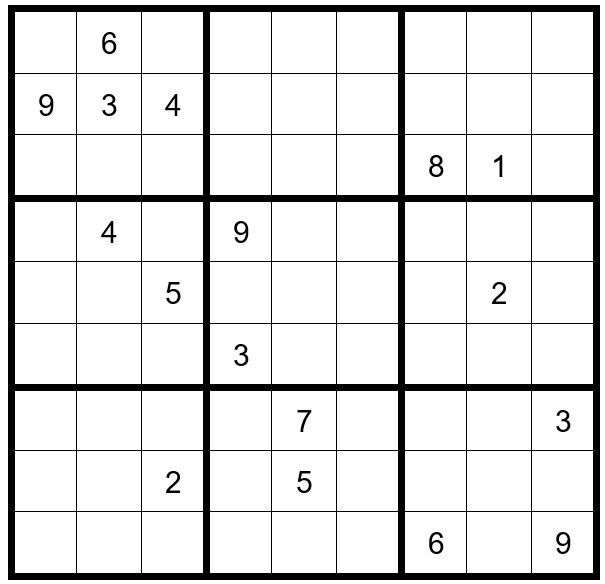
Impossible to solve?
Impossible? No. Difficult? Yes. Puzzle #135 should challenge you. Advanced Techniques (Steps 6 and/or 7) are required. If you solve this, you can consider yourself a master.
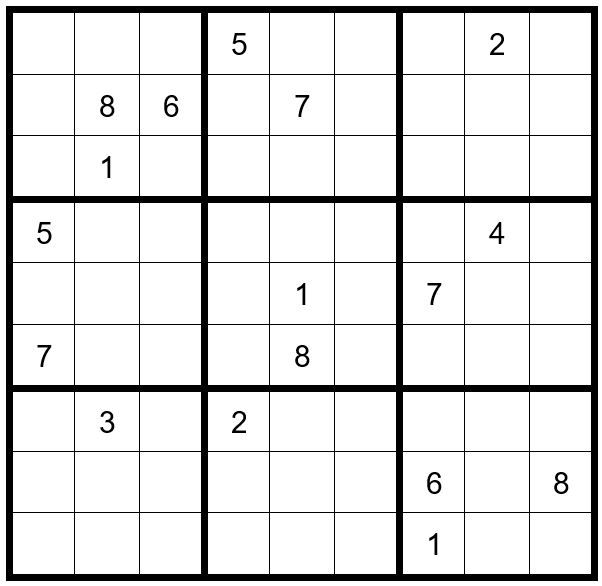
Feature Puzzle
Difficult rating … 3/10
(Rating based on puzzles requiring advanced techniques)
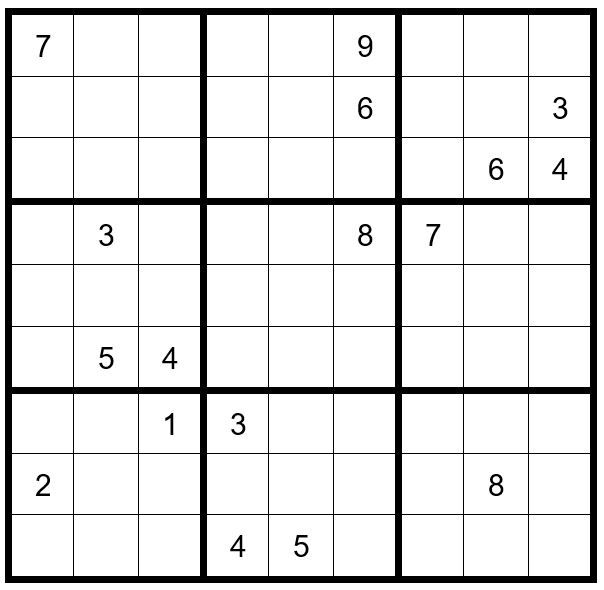
PUZZLE PREPARATION
Prior to utilizing techniques 1-8, complete the 5 Steps of Puzzle Preparation …
- FILL IN DATA FROM OBSERVATIONS
- FILL IN OBVIOUS ANSWERS
- FILL IN NOT-SO-OBVIOUS ANSWERS
- MARK UNSOLVED CELLS WITH OPTIONS THAT CANNOT EXIST IN THOSE CELLS
- FILL IN THE OPTIONS FOR THE UNSOLVED CELLS
The first thing we observe is that C8R2=7. C5R7=8.
C4R8 & C5R8 have options 6 & 9.
C6R7, C6R8 & C6R9 are limited to options 1,2 & 7.
C6R3, C6R5 & C6R6 are now limited to options 3,4 & 5.
There is already a 4 & 5 in row 6; therefore, C6R6=3. C6R3=5. C6R6=3. C8R4=4.
C5R7=8.
In box three a 9 can only exist as an option in C7R2 or C7R3; therefore, a 9 cannot exist as an option in C7R5, C7R6, C7R7 and C7R9. Place a small 9 in the bottom of those cells to indicate this.
In box four a 7 can only exist as an option in C2R5 or C3R5; therefore, a 7 cannot exist as an op-tion in C4R5 and C5R5.
Now your grid should look like Example #136.1 below:
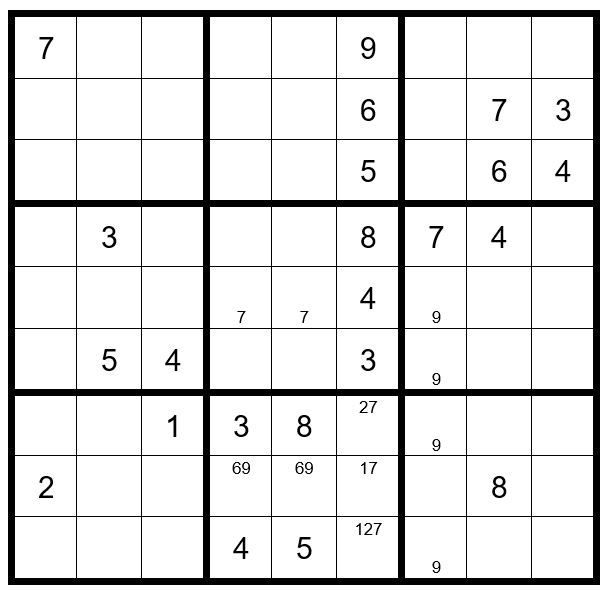
This completes Puzzle Preparation Steps 1-4. Next, we will fill in options for all unsolved cells, giving us Example #136.2 below:
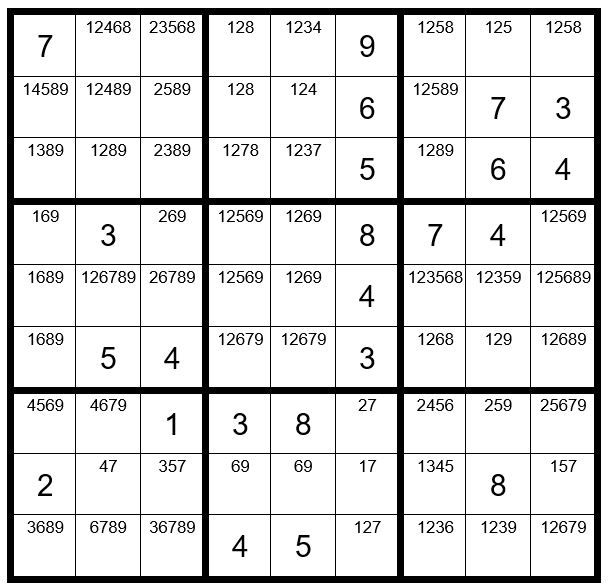
Dan recommends the following Steps to complete the puzzle.
Step 1: Sudoku Pairs, Triplets and Quads – See September 2015
Step 2: Turbos & Interaction – See October 2015
Step 3: Sudoku Gordonian Rectangles and Polygons – See November 2015
Step 4: XY-Wings & XYZ Wings – See December 2015
Step 5: X-Wings – See January 2016
Step 6: DAN’S YES/NO CHALLENGE
Step 7: DAN’S CLOSE RELATIONSHIP CHALLENGE
Step 8: AN EXPANSION OF STEP 7. Steps 1-5 are relatively common techniques and are explained in the TI LIFE articles. Steps 6-Posts 8 are covered in detail, in Dan’s book.

The first thing we notice is that there is a hidden pair in column 1. C1R2 & C1R7 are the only two unsolved cells in column 1 that can have options 4 & 5.
Check row 1. What do you see? Yes, C4R1, C7R1, C8R1 & C9R1 form a quad with options 1, 2, 5 & 8; therefore, we can remove those options from the other unsolved cells in row 1.
Now, in box 3 a C7R1, C8R1 or C9R1 must be a 5, since no other unsolved cell in row 1 can be a 5; therefore, we can remove the 5 from C7R2.
Now your grid should look like Example #136.3 below:
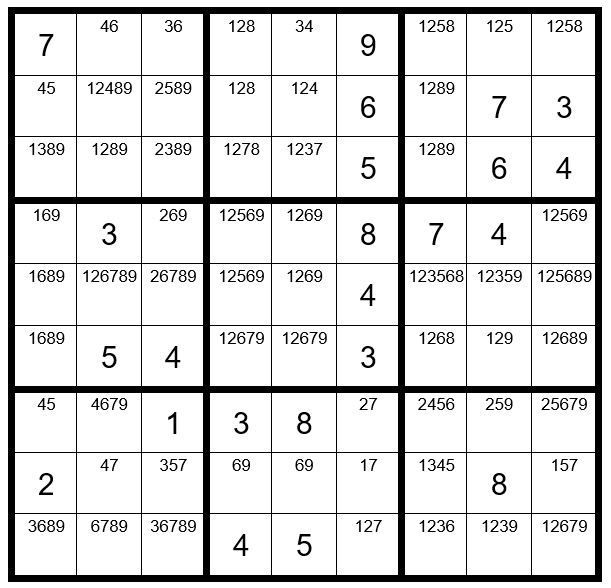
That completes techniques 1-5. There are no Step 6 candidates, so we will move on to Step 7, Dan’s Close Relationship Challenge.
We will select C2R1 as our starter cell, with a sequence of 6,4. We will annotate this on the 2nd level of this cell, as per Example #136.4 below:
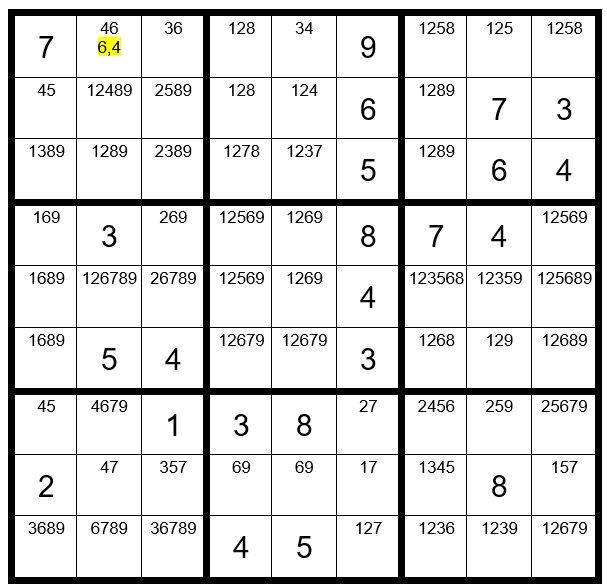
We annotate the unsolved cells that have a 6 as their option that are adjacent to the starter cell with “N6” indicating that those cells cannot be a 6 if the starting cell is a 6. As we track the 4 through the puzzle, if any of these N6 cells is a value other than 6, it would indicate that this cell is not a 6 regardless if the starter cell is a 6 or 4, and the 6 could be deleted as an option for that cell. We will track the 4 through the puzzle in Example #136.5 below:
Before we perform this exercise, we will list the potential outcomes …
• The tracking of the second number of the starter cell doesn’t reach the N9 cells, and there-fore, the exercise is unsuccessful.
• The tracking of the second number goes entirely through the puzzle without a conflict, in-dicating that the 2nd number is correct for the starter cell and you have solved the puzzle.
• The tracking of the second number creates a conflict, such as a number showing up twice in a row, column or box. Or it could show up by having no cell for a particular number in a row, column or box. Regardless of how the conflict arises, it would mean the second number is incorrect for that cell, and therefore, the answer to the starter cell is the first number.
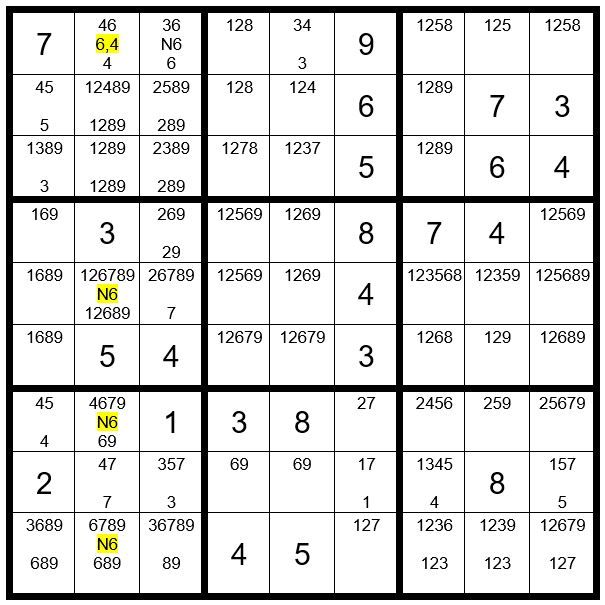
We will now track the 4 through the puzzle above on the third level of the unsolved cells to pre-serve the integrity of the original puzzle.
As you can see from example above, in tracking the 4 through the puzzle, we have reached an impasse. Look at column 3. No unsolved cell can be a 5. That is a conflict. So, now we know that C2R1 cannot be an 4; therefore, C2R1=6.
(Please note: when you track the 4 through the puzzle you may find a different conflict. Where the conflict occurs is dependent on how you track the 4.)
The puzzle is now easily solved, giving us Example #136.6 below:
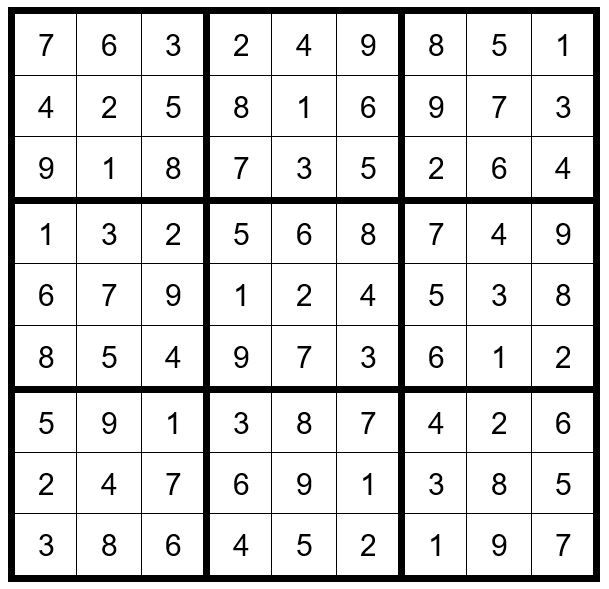
This feature puzzle is an example of being solved by just one Step 7 exercise. More difficult puz-zles may require multiple Step 7 exercises to solve.
May the gentle winds of Sudoku be at your back.
By Dan LeKander
Clue for Puzzle #133 …
Did you find the clue? If not, read on.
Check row 1. What do you see?
We see that C1R1, C4R1, C7R1, C8R1 & C9R1 cannot have options 3 & 9. That leaves just two unsolved cells that can have options 3 & 9, which are C2R1 & C6R1. You have discovered a hidden pair, which will help you later in the puzzle. Now your puzzle should look like Example #133.1 below:
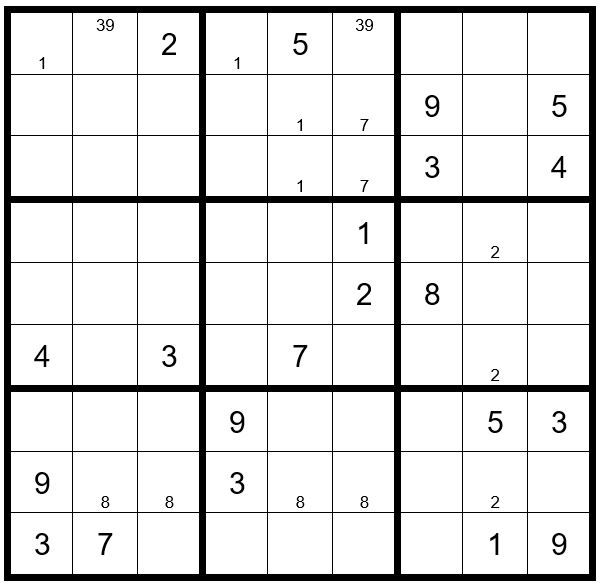
This should be a fun puzzle to complete.
Editor's Note: Hard to believe we are into 2023 and that our friend Dan LeKander has provided 4 more puzzles. Looks like he will do so in the coming months - so your challenge Sudokus are alive and well.
Recently someone wrote to ask how to fill them out online. Unfortunately, you need to print them yourself - but that is easy to do and I know you will have just as much fun.
And, if you have not already done so, I suggest you purchase Dan’s book:


